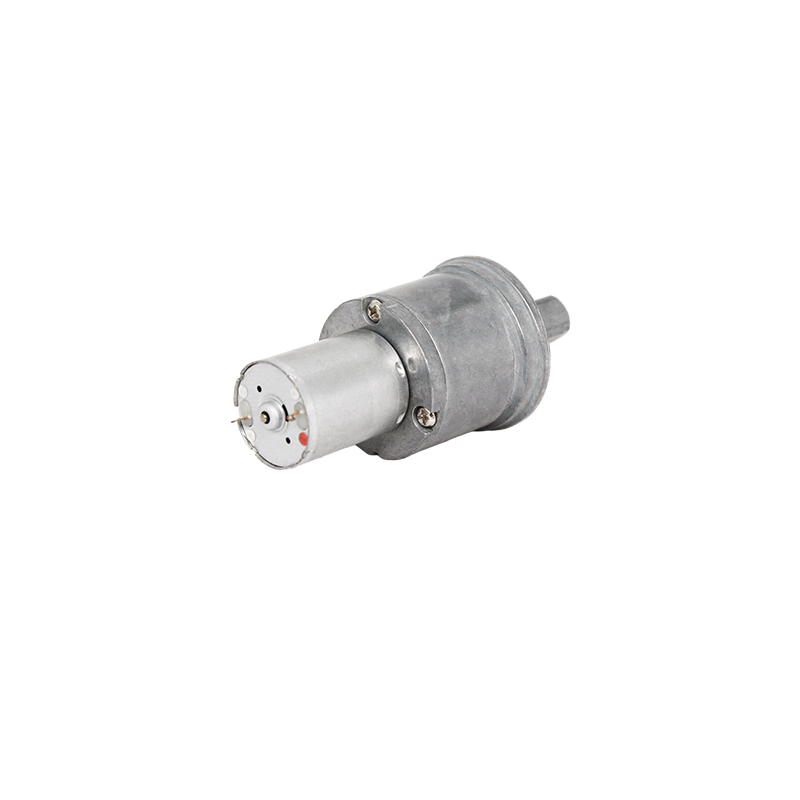Applications of Brushed Gear Reduction Motors
2024-06-04
A brushed gear reduction motor combines a brushed DC motor with a gearbox to reduce speed and increase torque. This type of motor is widely used in various applications where precise control of speed and torque is necessary. Here's an in-depth look at brushed gear reduction motors, including their features, benefits, types, applications, working principles, and maintenance:
Key Features of Brushed Gear Reduction Motors:
1. High Torque Output:
- The gearbox allows for a significant increase in torque, making it suitable for applications requiring high starting and running torque.
2. Speed Reduction:
- Gear reduction reduces the output speed of the motor, providing better control over the speed of the driven equipment.
3. Simplicity and Reliability:
- Brushed motors are simpler in design compared to brushless motors, making them reliable and easier to maintain.
4. Cost-Effectiveness:
- Typically more affordable than brushless motors, making them a cost-effective solution for many applications.
5. Wide Range of Sizes and Configurations:
- Available in various sizes and gear ratios to meet different application requirements.
Benefits of Brushed Gear Reduction Motors:
1. High Starting Torque:
- Excellent for applications that require high torque at startup, such as lifting mechanisms and conveyors.
2. Ease of Control:
- Simple to control using basic electronic controllers, making them suitable for applications requiring straightforward speed and direction control.
3. Durability:
- Robust construction allows for reliable performance in demanding environments.
4. Versatility:
- Can be used in a wide range of applications due to the variety of gear ratios and motor specifications available.
Types of Brushed Gear Reduction Motors:
1. Parallel Shaft Gear Motors:
- The motor and gearbox are aligned parallel to each other. Commonly used for compact applications with limited space.
2. Right-Angle Gear Motors:
- The gearbox output shaft is at a right angle to the motor shaft, providing a more compact arrangement for specific mounting requirements.
3. Planetary Gear Motors:
- Features a compact, high-torque gearbox configuration with gears arranged in a planetary system. Known for high efficiency and reliability.
Applications of Brushed Gear Reduction Motors:
1. Automotive:
- Used in windshield wipers, window regulators, and seat adjusters.
2. Industrial Equipment:
- Drives for conveyor belts, packaging machines, and material handling systems.
3. Robotics:
- Actuators for robotic arms, wheels, and other movement mechanisms.
4. Home Appliances:
- Components in electric drills, mixers, and other household devices.
5. Medical Devices:
- Movement and positioning systems in medical equipment such as hospital beds and imaging devices.
Working Principles of Brushed Gear Reduction Motors:
1. Motor Operation:
- The brushed DC motor converts electrical energy into mechanical energy through the interaction of the armature and the magnetic field in the stator. Brushes and a commutator switch the direction of current, ensuring continuous rotation.
2. Gear Reduction:
- The motor's high-speed rotation is transferred to the gearbox, where gears reduce the speed and increase the torque. The output shaft of the gearbox delivers the modified rotational energy to the driven equipment.
Maintenance of Brushed Gear Reduction Motors:
1. Brush Inspection and Replacement:
- Brushes wear out over time and need regular inspection and replacement to ensure optimal motor performance.
2. Lubrication:
- Regular lubrication of the gearbox is necessary to reduce friction and wear on the gears.
3. Cleaning:
- Keep the motor and gearbox clean from dust and debris to prevent overheating and premature wear.
4. Checking Connections:
- Ensure all electrical connections are secure and free from corrosion to maintain reliable operation.
Conclusion:
Brushed gear reduction motors are essential components in various applications requiring controlled speed and high torque. Their simplicity, reliability, and cost-effectiveness make them a popular choice in automotive, industrial, robotic, home appliance, and medical device applications. Understanding their features, benefits, types, and maintenance requirements helps in selecting and using these motors effectively for optimal performance and longevity.



